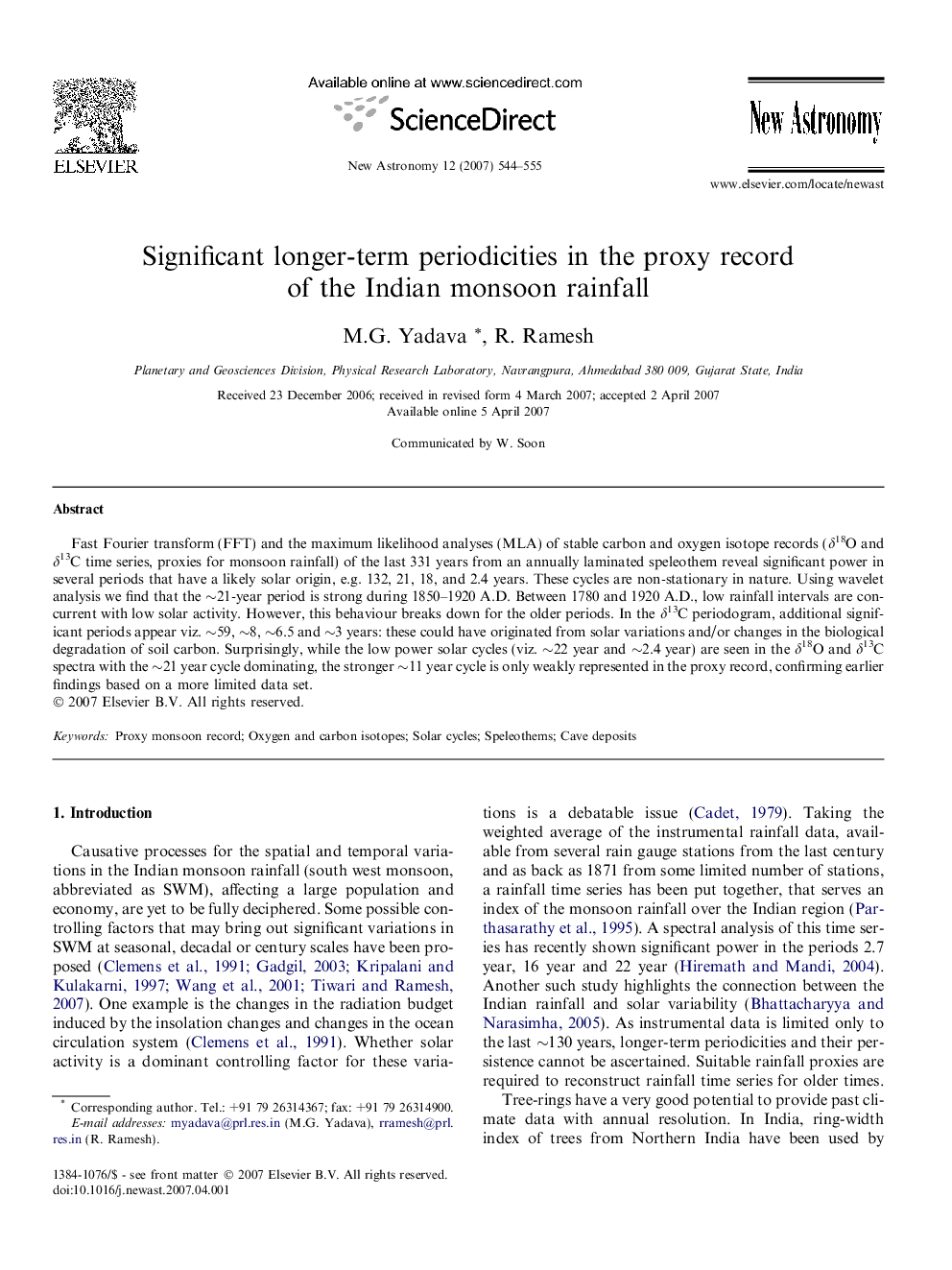| Article ID | Journal | Published Year | Pages | File Type |
|---|---|---|---|---|
| 1779412 | New Astronomy | 2007 | 12 Pages |
Fast Fourier transform (FFT) and the maximum likelihood analyses (MLA) of stable carbon and oxygen isotope records (δ18O and δ13C time series, proxies for monsoon rainfall) of the last 331 years from an annually laminated speleothem reveal significant power in several periods that have a likely solar origin, e.g. 132, 21, 18, and 2.4 years. These cycles are non-stationary in nature. Using wavelet analysis we find that the ∼21-year period is strong during 1850–1920 A.D. Between 1780 and 1920 A.D., low rainfall intervals are concurrent with low solar activity. However, this behaviour breaks down for the older periods. In the δ13C periodogram, additional significant periods appear viz. ∼59, ∼8, ∼6.5 and ∼3 years: these could have originated from solar variations and/or changes in the biological degradation of soil carbon. Surprisingly, while the low power solar cycles (viz. ∼22 year and ∼2.4 year) are seen in the δ18O and δ13C spectra with the ∼21 year cycle dominating, the stronger ∼11 year cycle is only weakly represented in the proxy record, confirming earlier findings based on a more limited data set.
